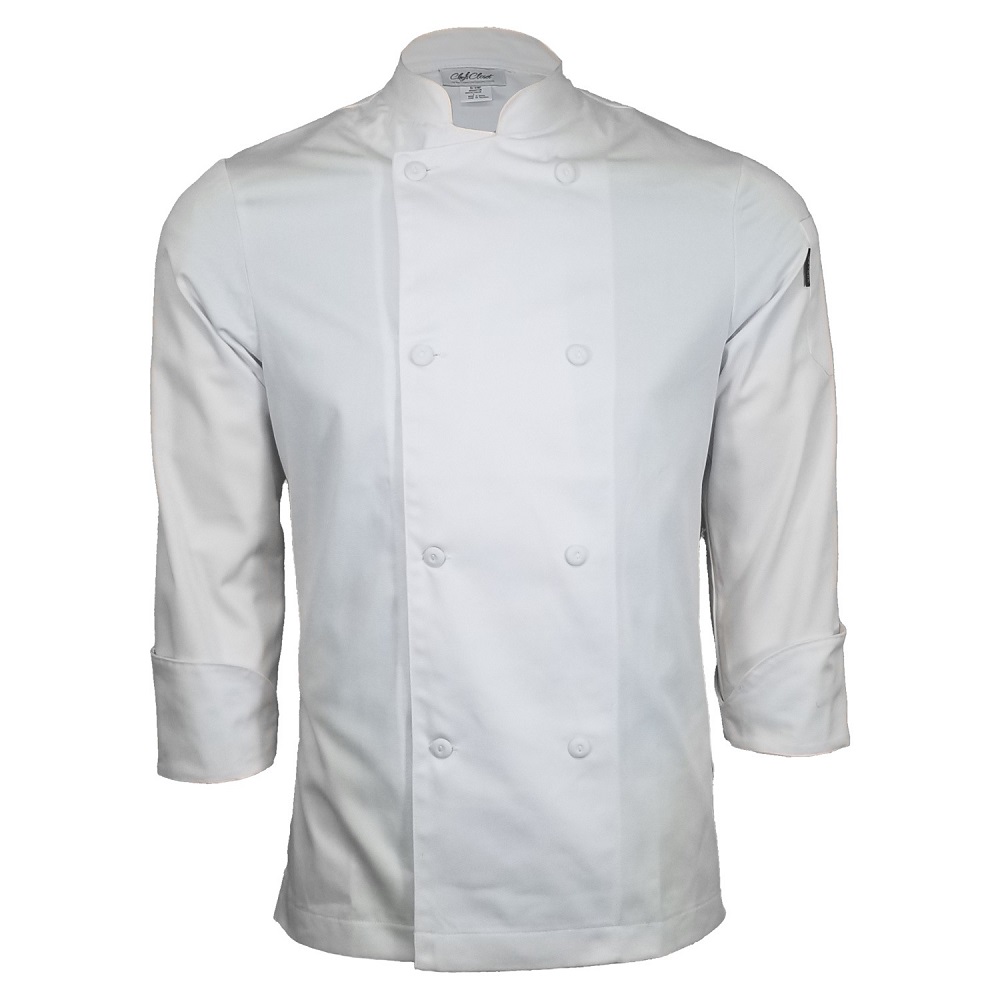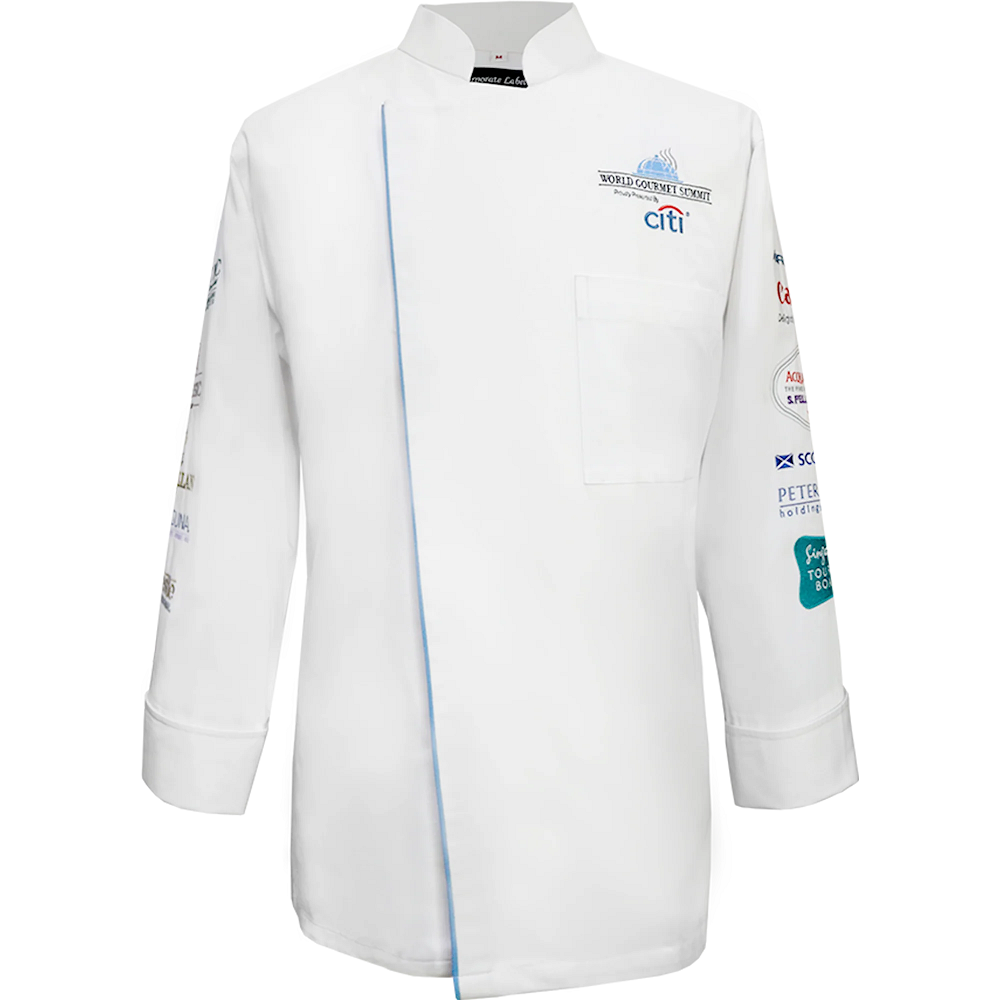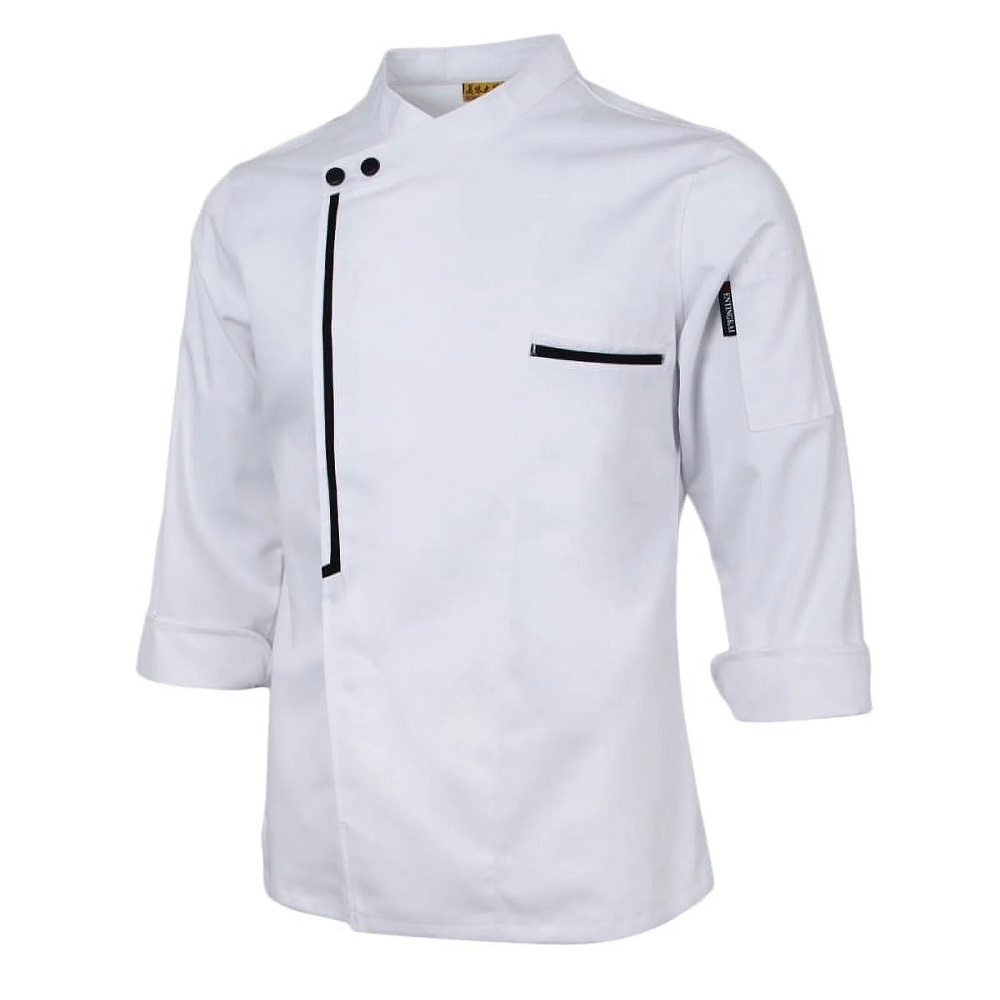
In the culinary world, a chef’s coat is more than just a piece of clothing; it’s a symbol of professionalism and a key element of kitchen attire. Among the many options available, the white chef coat stands out for its classic style and tradition. However, choosing the right fit and fabric is crucial for comfort and functionality during long hours in the kitchen. This article will explore the importance of a well-fitted white chef coat, the various fabric options available, and tips for selecting the perfect one for your culinary needs.
The Significance of the Chef Coat
Representing Professionalism
The white chef coat is a significant part of a chef’s uniform. It represents professionalism and indicates a commitment to hygiene in the kitchen. The uniform code in culinary spaces often emphasizes the importance of a clean, crisp appearance, making the white chef coat an essential piece.
Chefs of all experience levels wear white coats in restaurants, catering, and culinary schools. This distinct attire provides a sense of belonging and accountability in the kitchen environment. As such, it is vital to choose a coat that enhances both appearance and comfort.

Symbol of Tradition
The tradition of wearing white chef coats dates back to the 19th century when renowned French chef Georges Auguste Escoffier popularized it. He believed that the white color symbolized purity and cleanliness in cooking. The white chef coat quickly became a standard uniform for cooks and chefs everywhere.
Over time, this tradition has continued, with many culinary schools enforcing the use of white coats as part of their dress code. Wearing a white chef coat is a nod to the culinary arts’ rich history, and many chefs take pride in upholding this tradition as they develop their own culinary skills.
Promoting Hygiene
In the culinary industry, hygiene is of utmost importance, and the white chef coat plays a significant role in promoting cleanliness. The coat is designed to cover the chef’s clothing, protecting it from spills and stains during cooking. Wearing a chef coat inspires confidence in patrons, reassuring them about the hygiene standards maintained in the kitchen.
Regular washing and maintenance of the chef coat are crucial for maintaining cleanliness. White garments may show dirt and stains more easily, so diligent care is required. The choice of fabric can also impact how well the coat holds up to rigorous washing and stay bright.
Choosing the Right Fit
Importance of Fit
The fit of a chef coat greatly influences comfort, style, and functionality. A well-fitted coat allows for ease of movement, which is essential when working in a busy kitchen. Shoulders should fit nicely, allowing for comfortable arm movement. The sleeves should not be too tight, as this can restrict movement when reaching for items or stirring pots.

Sizes and Styles
Chef coats are typically available in a range of sizes, including small, medium, large, and extra-large. To ensure the best fit, it may be helpful to consult a sizing chart provided by the manufacturer. Some brands also offer options such as tall or petite sizes to accommodate various body types.
Different styles may also affect how a coat fits. Classic styles often feature a double-breasted design, while contemporary options may have a more fitted silhouette. Choosing a style that aligns with your body shape and preferences is essential for achieving both comfort and aesthetics.
Trying on the Coat
When possible, try on the chef coat before making a purchase. This allows you to assess how it feels when worn. Move around as you would in the kitchen—reach, stretch, and bend to ensure the coat allows for unrestricted movement.
If purchasing online, carefully review return policies so you can exchange it if the fit is not perfect. A comfortable, well-fitted coat is crucial for enjoying your time in the kitchen and performing at your best.
Understanding Fabric Options
Cotton Chef Coats
Definition and Benefits
Cotton is a popular fabric choice for chef coats due to its breathability and comfort. It is soft against the skin, helping to reduce irritation during long shifts. Cotton also has excellent moisture-wicking properties, allowing sweat to evaporate and keeping the wearer cool in hot kitchen environments.
However, 100% cotton may not always hold up well against stains or heavy washing. It can also wrinkle easily, which may detract from a polished appearance. Many brands offer cotton blends that incorporate other materials for added durability and wrinkle resistance.

Ideal for Casual Kitchens
Cotton chef coats are suitable for a range of culinary environments. They are ideal for home cooks, casual kitchens, and culinary students. The comfort and breathability of cotton make them reassuringly nice to wear, even in high-pressure situations.
Polyester Chef Coats
Definition and Benefits
Polyester is another common fabric used in chef coats. It is known for its durability and resistance to stains and wrinkles. Polyester coats tend to maintain their shape and appearance even after multiple washes, making them a low-maintenance option for busy chefs.
The downside of polyester is that it may be less breathable than cotton. This reduced breathability can lead to discomfort in hotter kitchen environments. Many manufacturers create blended fabrics that combine polyester with cotton to capitalize on the benefits of both materials.
Best for High-Volume Environments
Polyester chef coats are ideal for professional kitchens or those engaging in high-volume cooking. Their durability and stain resistance provide peace of mind for chefs working with messy ingredients or in environments where spills are common. For those who prioritize practicality without compromising style, polyester or blends are excellent choices.
Blended Fabrics
Definition and Benefits
Blended fabrics combine different materials to create garments that capitalize on the strengths of each fiber. For example, a common blend may include 65% polyester and 35% cotton. This combination provides the feel of cotton while incorporating the durability of polyester.
Sean hybrid garments offer breathability, comfort, and resistance to wrinkling or shrinking. They often provide the best of both worlds for chefs who desire both aesthetic appeal and practicality in their uniforms.

Versatile Options for Any Chef
Blended fabric chef coats can be styled in various ways to suit different culinary environments. Their versatility makes them suitable for anything from high-end restaurants to food trucks. As a result, they have become a popular choice for many chefs today.
Care and Maintenance of Chef Coats
Regular Washing Practices
Caring for your chef coat is essential to maintaining its appearance and functionality. Regular washing is necessary to remove stains, odors, and cooking residues. Most chef coats can be machine-washed, but always consult the care label for specific washing instructions.
For cotton chef coats, washing in cold water can help maintain color and prevent shrinking. However, polyester blends may withstand warmer temperatures without damage. Using a mild detergent can further ensure that the fabric retains its quality over time.
Avoiding Stains
As chefs often work with messy ingredients, avoiding stains on chef coats can be a challenge. If spills occur, addressing them promptly can help prevent permanent marks. Blotting the stain rather than rubbing it will keep the fabric intact and minimize the spread.
For tougher stains, consider using pre-treatments or stain removers designed for fabrics. Just be sure to follow the manufacturer’s instructions. Developing good habits around maintaining your chef coat can prolong its lifespan and keep it looking sharp.
Proper Drying Techniques
Drying is another effective method to preserve your chef coat. It’s best to air dry chef coats when possible to avoid heat damage from dryers. If using a dryer, employ a low-heat setting to prevent shrinking and keep the coat’s fabric intact.
Hanging the coat up while damp can help reduce wrinkles and maintain its shape. For cotton coats, consider lightly steaming them after drying to remove any stubborn wrinkles that may remain.
Engaging with the Culinary Community
Connecting with Other Chefs
Becoming part of the culinary community can enrich your experiences as a chef. Engaging with other professionals allows for sharing knowledge and insights about cooking, equipment, and attire, including topics related to chef coats.
Joining local culinary groups or participating in professional organizations offers opportunities for networking. Through these connections, chefs can gather information on the latest trends, innovations, and best practices in the industry.

Participating in Culinary Events
Attending culinary events, workshops, and competitions allows you to connect with others while expanding your skills. These events often feature demonstrations from renowned chefs, providing valuable learning opportunities.
Wearing your professional chef coat to these events can enhance your confidence and inspire you to engage with your peers. These experiences help promote professional growth and uncover new culinary philosophies or techniques.
Sharing Your Culinary Journey
Consider documenting your culinary journey on social media or through blogs. Sharing your experiences with cooking and working in the kitchen can inspire other chefs and home cooks alike. Discussing topics such as recipe development, equipment preferences, and chef coat maintenance can provide value to your audience.
This sharing won’t only enhance your profile within the culinary community but can also serve as a supportive network for aspiring chefs. Engaging with your followers promotes discussion and collaboration within the culinary landscape.
Conclusion
The white chef coat is an essential component of any chef’s wardrobe, symbolizing professionalism, tradition, and commitment to hygiene. Selecting the right fit and fabric is critical for comfort and functionality during numerous hours spent in the kitchen.
By exploring the various material options and understanding care practices, you can ensure that your chef coat remains in pristine condition. Engaging with the culinary community will keep you motivated and informed while helping you discover new techniques and perspectives.
As you embrace your journey in the culinary world, let your choice of chef coat reflect your dedication to excellence in cooking. With the right coat on your back, you will not only achieve comfort but elevate your culinary experience and personal style in the kitchen, confidently raising the bar for culinary standards!
